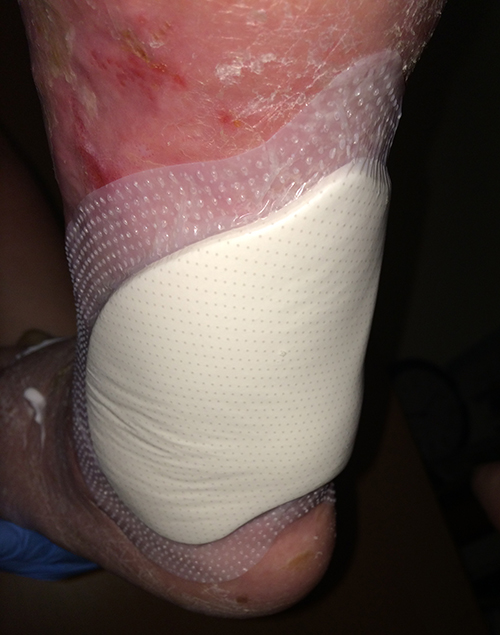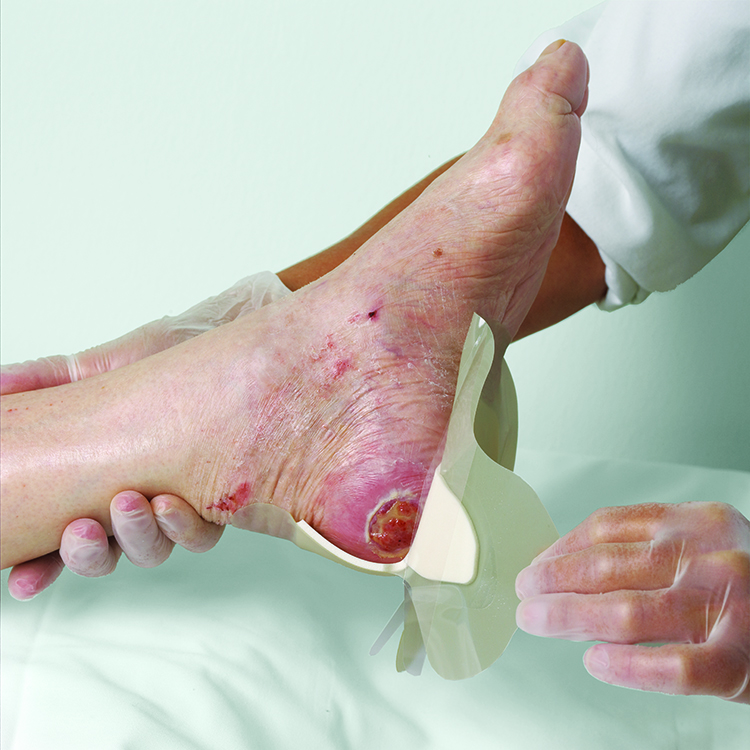How to manage diabetic foot ulcers
In this section, you’ll learn about:

A holistic approach to caring for diabetic foot ulcers
As a healthcare professional, you know that providing effective care is about more than just treating the patient in front of you. It’s a partnership between your patient, their family or relatives, and yourself and the rest of the healthcare team.
This is especially important when managing diabetic foot ulcers. It’s important to keep everyone informed about the patient’s treatment and care. This will help them to participate in decision-making, understand why you make certain clinical decisions, and support the patient in maintaining good self-care.1
In this section, we show you how to take a holistic approach to assessing and managing diabetic foot ulcers.
How do I assess and monitor a diabetic foot ulcer?
One of the most effective ways to assess a DFU is to conduct a holistic wound assessment. If you don’t already know what this involves, you’ll find a full description here.
Once you’ve conducted a holistic assessment of the wound, here are some tips for how to monitor the patient’s wound over time:
- Establish a baseline. Record the size, depth, appearance and location of the DFU. This information will help you to develop a treatment plan and monitor how the wound responds to the agreed care plan.
- Document the DFU. Try taking a digital photograph of the DFU during the first consultation. Then take additional photographs periodically throughout the treatment. This will help you to track the wound’s progress over time. You can also use the photographs to give patients tangible proof that the wound is improving. And you can share the photographs with the rest of the healthcare team to make sure you’re all providing consistent wound care.
- Assess the area around the wound. Look for signs of erythema and maceration, as this might indicate complications that will prevent the wound from healing.1
Essential steps to manage a diabetic foot ulcer
There are four essential steps to go through when managing diabetic foot ulcers:1,2
1. Pressure offloading
Neuropathy often leads to increased pressure on the sole of the foot, which can lead to diabetic foot ulcer formation. For this reason, reducing or offloading the pressure on the foot is the most important intervention to effectively heal a diabetic foot ulcer.3
2. Ensuring adequate blood supply
This step will help prevent acute limb ischaemia, or lack of blood in the limb. This is important because acute ischaemia is a clinical emergency and may put the patient at great risk if not managed in a timely and effective way.1
3. Administering local wound care
This step should include:
-
- radical and repeated debridement;
- frequent inspection and infection control; and
-
careful moisture balance to prevent maceration.1
4. Treating the underlying disease
As diabetic foot ulcers are a complication to diabetes, effectively managing them includes treating the underlying disease. So, when you examine your patient, you should look for signs of severe ischaemia, unstable diabetes or physical trauma.1
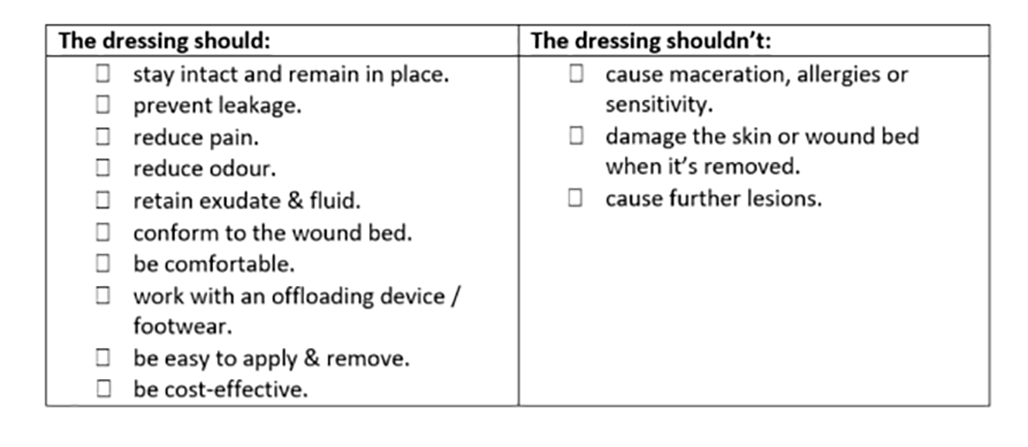
How to manage exudate in diabetic foot ulcers
One of the important factors to establish before selecting a topical treatment for diabetic foot ulcers is the wound’s level of exudate.4
If you have a diabetic foot ulcer with high exudate levels, you need a dressing that absorbs moisture. But if you have a dry wound, you will need to use a topical treatment that adds moisture.2
You can use the following guide, developed by World Union of Wound Healing Societies, to find the right dressing for the wound’s exudate levels.4
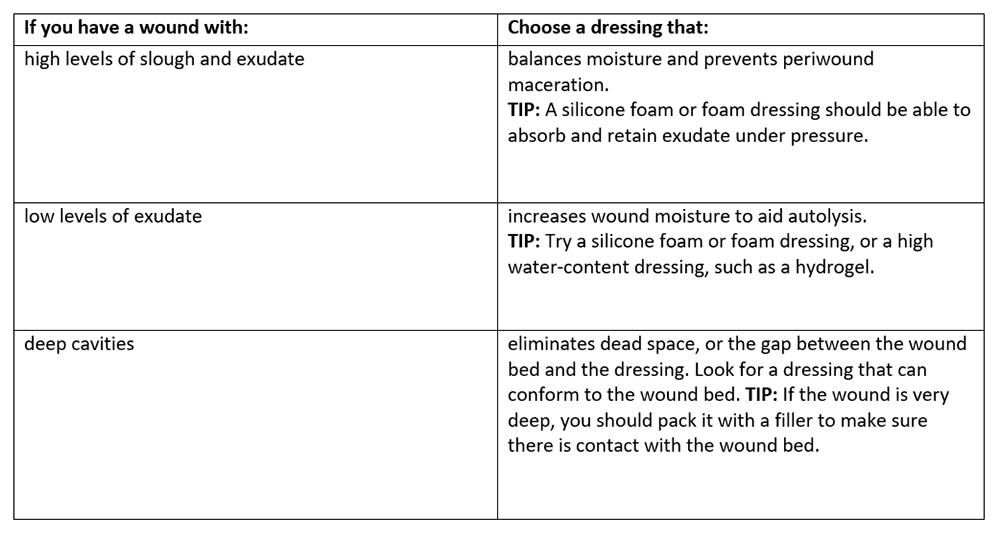
References
- Wounds International (2013). International Best Practice Guidelines: Wound Management in Diabetic Foot Ulcers.
- International Diabetes Federation (2017). Clinical Practice Recommendation on the Diabetic Foot: A guide for health care professionals: International Diabetes Federation: Brussels
- Bus, S. A., Armstrong, D. G., Gooday, C., Jarl, G., Caravaggi, C. F., Viswanathan, V., Lazzarini, P. A., on behalf of the International Working Group on the Diabetic Foot
- World Union of Wound Healing Societies (WUWHS) (2016). Florence Congress, Position Document. Local management of diabetic foot ulcers. Wounds International.
You may also be interested in…
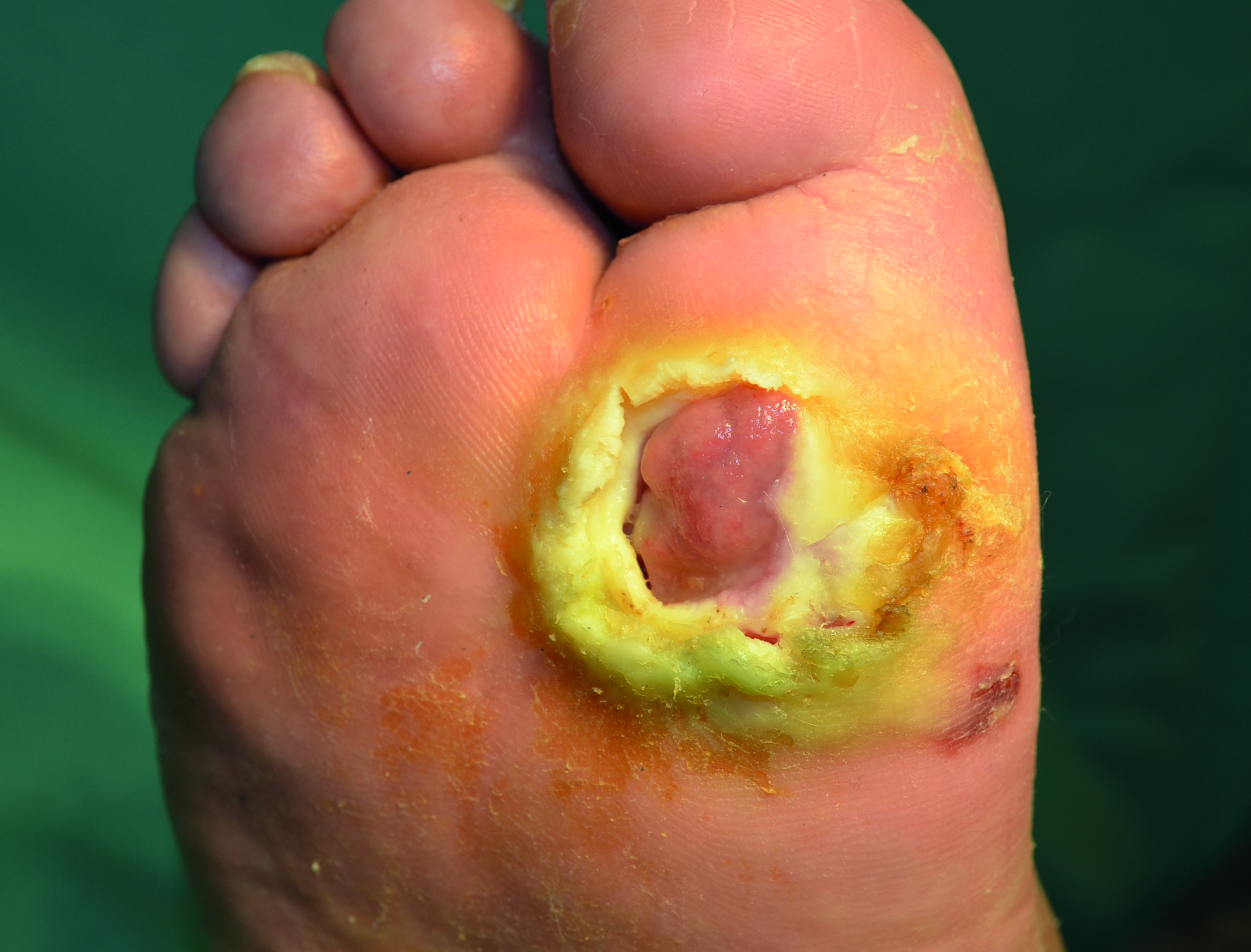
HEAL e-learning
Learn how to identify, assess and manage diabetic foot ulcers with this EWMA-endorsed course.
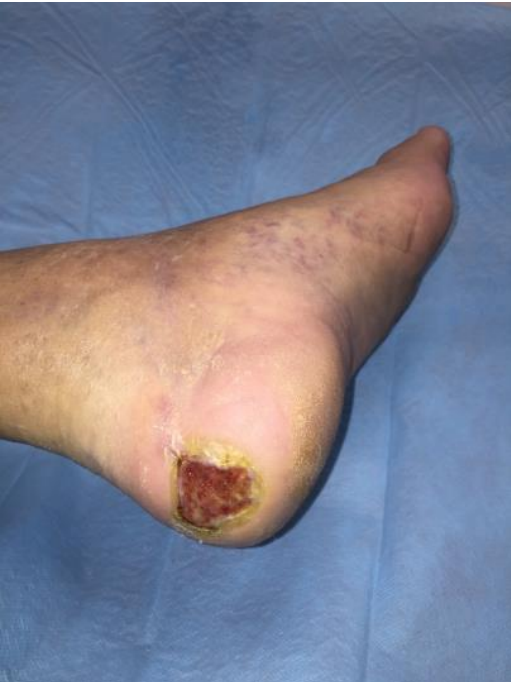
Patient case
Learn how a mildly infected diabetic foot ulcer on the heel was managed with a silver dressing.
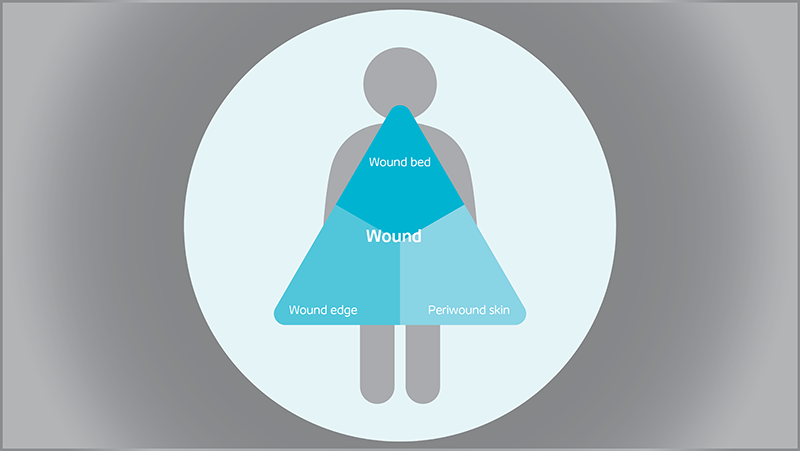
Triangle of Wound Assessment
Conduct a holistic and systematic wound assessment with our tool.

